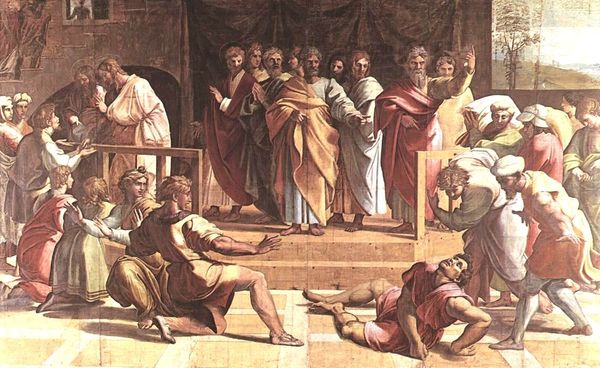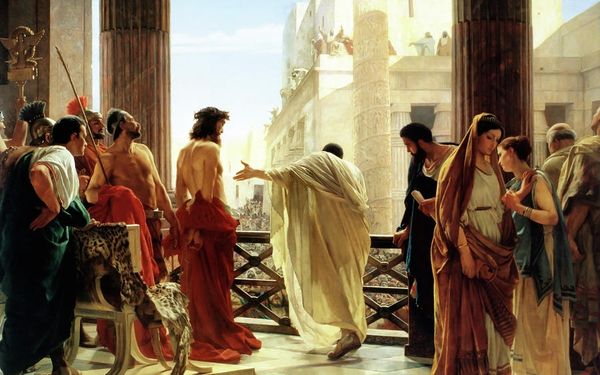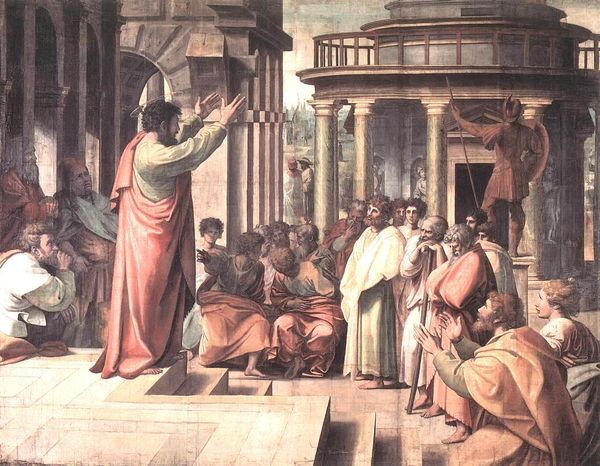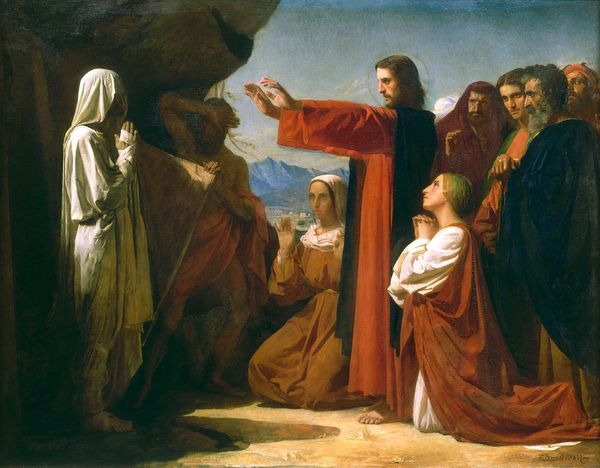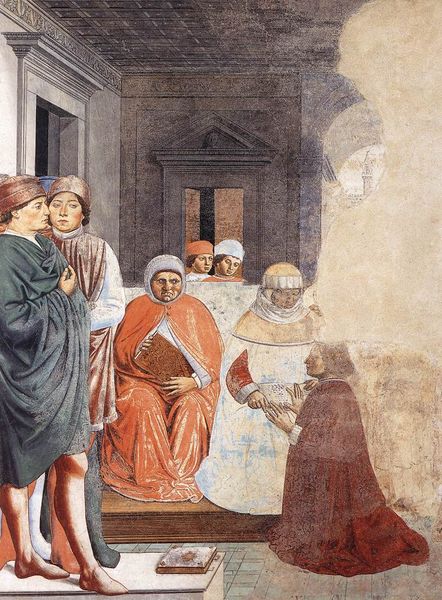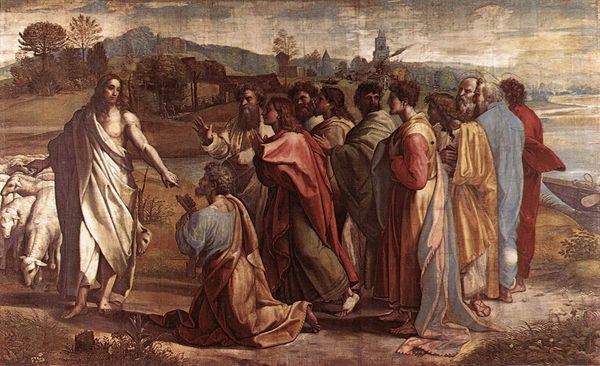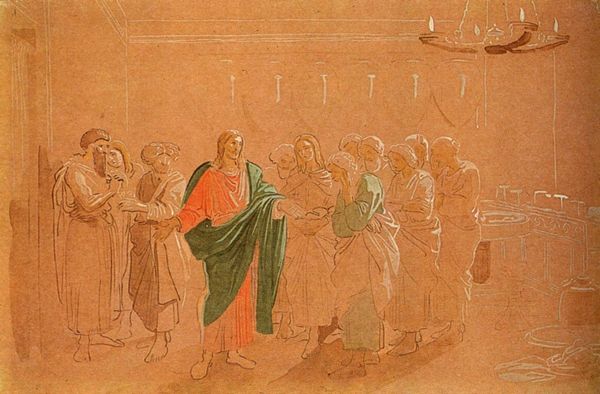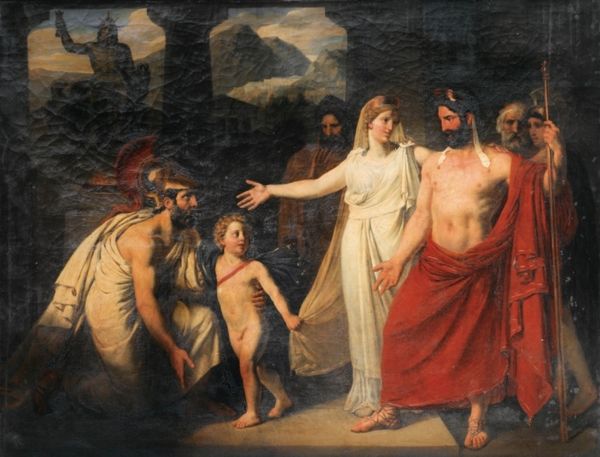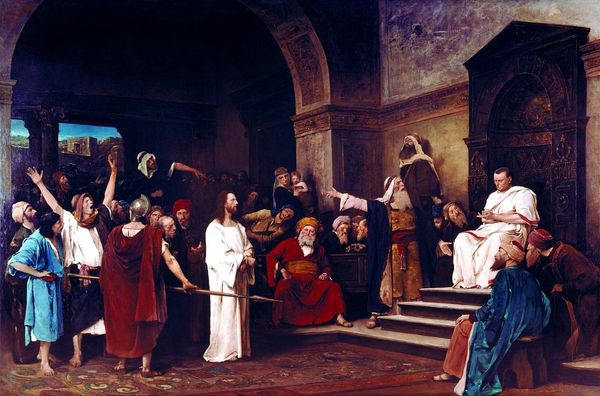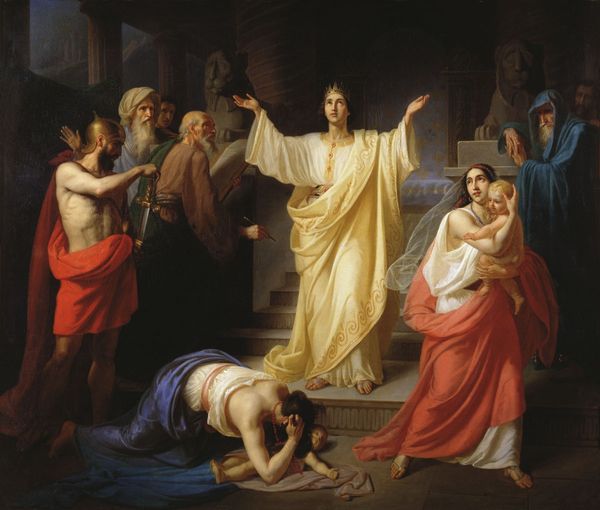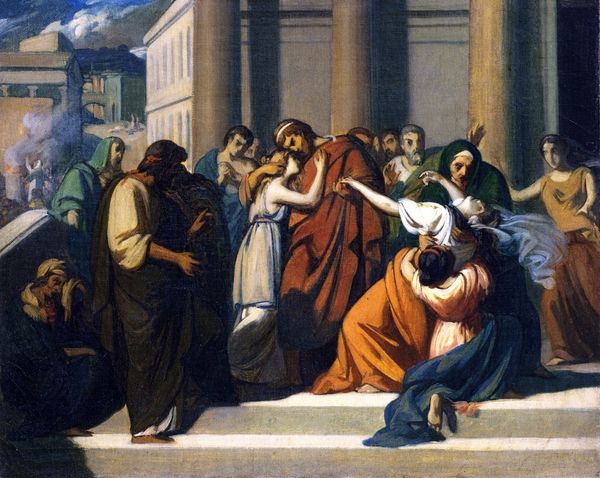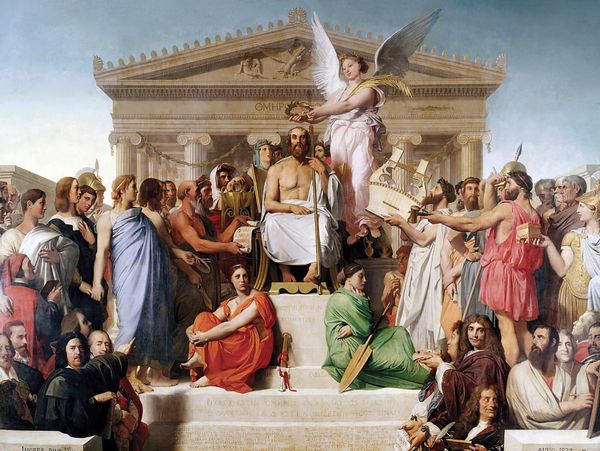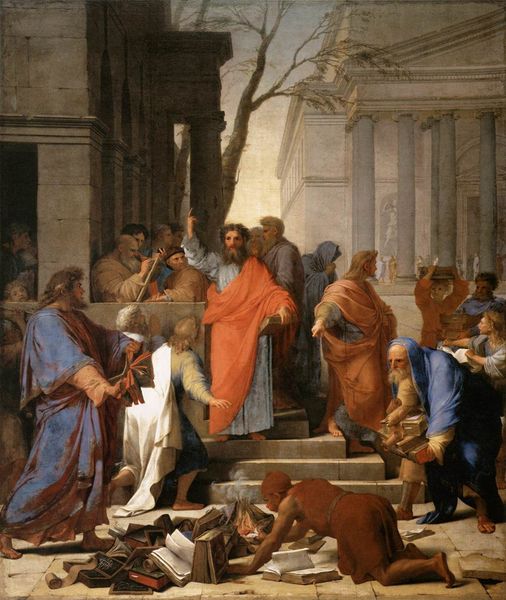
painting, oil-paint
#
narrative-art
#
painting
#
oil-paint
#
figuration
#
oil painting
#
romanticism
#
history-painting
#
realism
Copyright: Public Domain: Artvee
Curator: Here we have Paul Delaroche’s “The Conversion of Saint Mary Magdalene,” created around 1834 to 1835 using oil paints. It's a captivating tableau of faith and transformation. What’s your initial take? Editor: I'm immediately struck by the subdued palette. There's an almost sepia-toned quality that gives it a weight, an air of austerity, despite the narrative scene. The oil paint itself seems thickly applied in areas, particularly around the figures in the foreground. Curator: Exactly, it is worth exploring that the artist has chosen the very loaded figure of Mary Magdalene. Delaroche was working during a time of significant social upheaval in France and across Europe, after the French Revolution. He really plays into a visual interpretation of guilt, redemption and grace which resonates strongly with his contemporary context. How does the portrayal of the crowd figure into this theme? Editor: Well, the crowd seems intentionally heterogeneous, doesn't it? There's a range of garments, head coverings... presumably representing different levels of society? The material reality of those clothes tells its own story about labor and the systems of trade that brought them into being. Curator: Absolutely, there are women veiled and unveiled and a few wearing the dress of wealthier classes. But even within the apparent chaos, there's this focal point—the bare feet of Christ and Mary touching the ground, and what does that say in material terms about the making of faith or belief and a society predicated on visible demonstrations of it? It seems that Delaroche captures that in quite real terms! Editor: Interesting perspective! Also, what sort of ground is this supposed to be exactly? We see very little texture of earth. More like a staged construction, where the sermon or speechifying becomes a staged production or the labor of conversion becomes spectacle. Curator: Perhaps. I am still focusing on the act of seeing Mary as a sinner as one of several dominant themes within a patriarchal construction of society at the time. One element in the depiction of labour is, for instance, one of repentance from sin. As opposed to that perspective of labor as "a social structure" Editor: It seems he certainly leaves much open to our own interpretation. And those textures and materials, although historically framed, connect directly to our contemporary modes of seeing and making sense of a world of materials and signs! Curator: True! Thank you for that rich and provoking observation. Editor: Thank you!
Comments
No comments
Be the first to comment and join the conversation on the ultimate creative platform.
